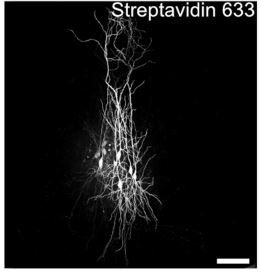In our latest study, we demonstrate that ammonium chloride (NH4Cl) significantly reduces excitatory synaptic transmission onto CA1 pyramidal neurons in organotypic hippocampal cultures. Our findings emphasize that astrocytes play a crucial role in mediating this effect, particularly through glutamine synthetase activity, which is key in ammonia clearance from the brain. Furthermore, the data suggest that NH4Cl-induced disruptions in synaptic transmission are reversible, and astrocyte-targeted interventions could mitigate these effects.
This study provides new insights into the neurophysiological consequences of hyperammonemia, commonly associated with hepatic encephalopathy, and underscores the need for strategies aimed at preserving synaptic function in such conditions. By understanding the impact of ammonia on synaptic activity and astrocyte-neuron interactions, we aim to contribute to the development of more targeted treatments for neuropsychiatric disorders linked to elevated ammonia levels.
Abstract
Acute liver dysfunction commonly leads to rapid increases in ammonia concentrations in both the serum and cerebrospinal fluid, primarily affecting brain astrocytes. In this study, we explored the impact of ammonium chloride (NH4Cl, 5 mM) on synaptic transmission onto CA1 pyramidal neurons in mouse organotypic hippocampal slice cultures. We found that acute exposure to NH4Cl reversibly reduced excitatory synaptic transmission and specifically affected CA3-CA1 synapses. NH4Cl altered astrocytic passive membrane properties without affecting CA1 pyramidal neurons. Inhibition of glutamine synthetase, an astrocytic enzyme crucial for ammonia detoxification, prevented the reduction in excitatory synaptic activity, demonstrating the pivotal role of astrocytes in regulating synaptic transmission under hyperammonemic conditions. These findings enhance our understanding of the neural mechanisms underlying hyperammonemia’s effects on the brain and suggest potential astrocyte-targeted therapeutic interventions.
If you want to learn more, click here to access the full article!
